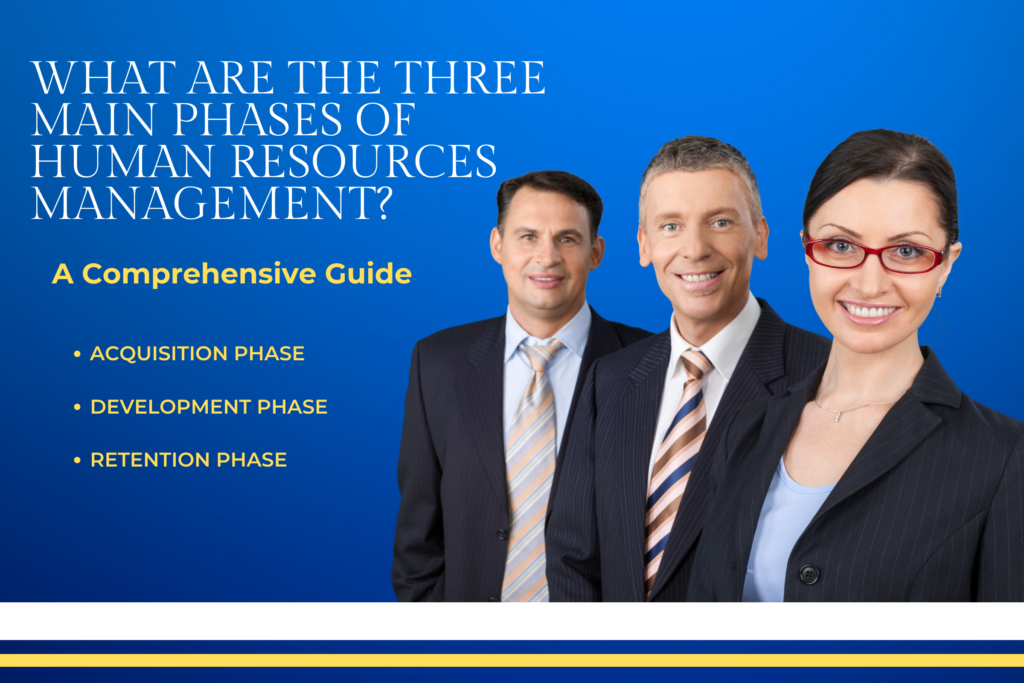
Have you ever thought about where your money goes when you invest? Maybe you’ve heard about something called “sustainable investing” and wondered what it’s all about. Well, you’ve come to the right place! In this article, we’ll break down everything you need to know about sustainable investing and how it can help you make a positive impact on the world, all while potentially growing your money.
Also Read: What Is SWOT Analysis And How Does It Work?: A Comprehensive Guide
What is Sustainable Investing?
Sustainable investing is all about putting your money towards companies that are making a conscious effort to be good for the environment, treat their employees fairly, and have strong leadership. It’s about investing in a future we can all be proud of!
Here’s a breakdown of what sustainable investing is NOT:
- Giving away your money: You’re still investing with the goal of making money. Sustainable investing is about finding companies that are doing good AND making a profit.
- Just about the environment: While environmental factors are important, sustainable investing also considers social and governance issues.
Here’s what sustainable investing IS:
- Making a difference: By investing in sustainable companies, you’re supporting businesses that are working towards a better future.

- Thinking long-term: Sustainable companies are often well-positioned for the future because they’re addressing important issues that aren’t going away.
- A good investment strategy: Studies have shown that sustainable investments can perform just as well, or even better, than traditional investments over time.
Understanding ESG Factors
So, how do investors know which companies are sustainable? This is where ESG factors come in. ESG stands for Environmental, Social, and Governance. These are three key areas that investors look at to assess a company’s sustainability.
Let’s break down each factor:
- Environmental (E): This looks at how a company impacts the environment. Does it use a lot of energy? Does it create pollution? Does it manage waste responsibly? Companies that are good for the environment might invest in renewable energy sources, reduce their carbon footprint, and conserve natural resources.

- Social (S): This looks at how a company treats its employees, customers, and the community. Does it offer fair wages and benefits? Does it have a diverse workforce? Does it source its materials from responsible suppliers? Companies with strong social practices are likely to be good employers, treat their customers with respect, and give back to the communities they operate in.
- Governance (G): This looks at how a company is run. Does it have a strong leadership team? Does it have clear ethical guidelines? Does it have a good track record of corporate responsibility? Companies with good governance are likely to be transparent, accountable, and operate with integrity.
By considering all three ESG factors, investors can get a more complete picture of a company’s sustainability and make informed investment decisions.
Here are some resources where you can learn more about ESG factors:
- The Sustainability Accounting Standards Board (SASB): https://sasb.ifrs.org/ – This organization sets standards for how companies report on their ESG performance.
- The Global Reporting Initiative (GRI): https://www.globalreporting.org/ – This organization provides a framework for companies to report on their sustainability impacts.
Benefits of Sustainable Investing
There are many benefits to consider when it comes to sustainable investing:
- Make a positive impact: Invest in companies that are making a difference in the world and feel good about where your money is going.
- Long-term potential: Sustainable companies are often well-positioned for the future because they’re addressing important issues.
- Potential for strong returns: Studies have shown that sustainable investments can perform just as well, or even better, than traditional investments over time.
- Reduce risk: By considering ESG factors, investors can potentially avoid companies that are exposed to environmental or social risks.
- Align your investments with your values: Invest in companies that share your values and beliefs about the world.
How to Get Started with Sustainable Investing
Sustainable investing is becoming increasingly popular, and there are more options available than ever before. Here are some ways to get started:
- Talk to your financial advisor: A good financial advisor can help you understand your investment goals and create a sustainable investment portfolio that’s right for you.
- Do your research: There are many resources available online and in libraries that can help you learn more about sustainable investing and specific companies.
- Invest in sustainable funds: There are a growing number of mutual funds and exchange-traded funds (ETFs) that focus on sustainable investing. These funds invest in a basket of companies that
Sustainable Investing Options and Considerations
Once you’ve decided to explore sustainable investing, there are a few things to consider:
Investment approach:
- Negative screening: This approach involves excluding companies from your portfolio that don’t meet certain ESG criteria. For example, you might exclude companies involved in fossil fuels or those with poor labor practices.
- Positive screening: This approach focuses on investing in companies that are leaders in sustainability. These companies might be actively working on renewable energy solutions, promoting diversity and inclusion, or demonstrating strong ethical leadership.
- Impact investing: This takes sustainable investing a step further by focusing on companies that are specifically intended to have a positive social or environmental impact. These companies might be working on solutions for clean water access, affordable housing, or sustainable agriculture.
Investment vehicles:
- Mutual funds: These are professionally managed funds that pool money from many investors and invest in a variety of companies. There are many mutual funds available that focus on sustainable investing.
- Exchange-traded funds (ETFs): Similar to mutual funds, ETFs are baskets of securities that trade on a stock exchange. There are also a growing number of ETFs focused on sustainable investing.
- Individual stocks: If you’re comfortable doing your own research, you can invest directly in individual companies that meet your sustainability criteria.
Here are some resources to help you find sustainable investments:
- Morningstar Sustainability Rating: [invalid URL removed] – This rating system evaluates mutual funds and ETFs based on their ESG practices.
- USSIF – The Forum for Sustainable and Responsible Investment: https://www.ussif.org/ – This organization provides resources and information on sustainable investing.
Important things to remember:
- Sustainable investing is not a guarantee: Just like any investment, there’s always risk involved. However, considering ESG factors can help you make informed decisions and potentially reduce risk.
- Do your research: There’s no one-size-fits-all approach to sustainable investing. It’s important to understand your own investment goals and risk tolerance before making any decisions.
- Start small: You don’t have to invest all your money in sustainable options right away. Start small and gradually increase your sustainable investments over time.
Beyond Investing: Everyday Actions for Sustainability
Sustainable investing is a great way to make a positive impact with your money, but there are many things you can do in your everyday life to be more sustainable as well. Here are a few ideas:
- Reduce your carbon footprint: Use public transportation, walk, or bike whenever possible. Conserve energy at home by turning off lights and electronics when you’re not using them.
- Conserve water: Take shorter showers, fix leaky faucets, and water your lawn less often.
- Reduce, reuse, and recycle: Buy less stuff, reuse what you can, and recycle whenever possible.
- Support sustainable businesses: Look for companies that are committed to sustainability when you’re making purchasing decisions.
- Get involved in your community: Support local organizations that are working on sustainability issues.
By making small changes in your everyday life and investing your money sustainably, you can help create a better future for yourself and the planet.
Remember, every little bit counts!
Final Thoughts
Sustainable investing is a powerful tool that allows you to make a positive impact on the world while potentially growing your money. By understanding ESG factors and exploring the different investment options available, you can create a sustainable investment portfolio that aligns with your values and goals. And don’t forget that sustainable living goes beyond investing. By making small changes in your everyday life, you can contribute to a healthier planet for all.
Ready to get started? Talk to your financial advisor, do your research, and take the first step towards a more sustainable future!
Sustainable Investing and ESG Factors: Frequently Asked Questions
Sustainable investing is a growing trend, but it can also be a complex topic. Here are some frequently asked questions to help you gain a deeper understanding:
- Is sustainable investing just about the environment?
While environmental factors are a key consideration (think climate change, pollution, resource management), sustainable investing goes beyond that. ESG factors encompass three key areas:
- Environmental (E): How a company impacts the environment through its operations and products.
- Social (S): How a company treats its employees, customers, and the community it operates in. This includes labor practices, diversity and inclusion, and social responsibility.
- Governance (G): How a company is managed. This includes leadership, ethical practices, transparency, and accountability.
By considering all three ESG factors, investors get a more complete picture of a company’s sustainability and its potential impact on the world.
- Isn’t sustainable investing just for tree huggers?
Absolutely not! Sustainable investing is appealing to a wide range of investors for several reasons:
- Long-term potential: Companies that prioritize sustainability are often well-positioned for the future because they’re addressing important issues like climate change and resource scarcity.
- Potential for strong returns: Studies have shown that sustainable investments can perform just as well, or even better, than traditional investments over time.
- Reduced risk: By considering ESG factors, investors can potentially avoid companies that are exposed to environmental or social risks, such as regulations related to pollution or poor labor practices.
- Aligning your investments with your values: Sustainable investing allows you to invest in companies that share your values and beliefs about the world.
- Do I have to give up good returns to invest sustainably?
No, there’s no trade-off between returns and sustainability. In fact, as mentioned earlier, sustainable investments have the potential to perform just as well, or even better, than traditional investments over time. This is because sustainable companies are often well-managed, innovative, and addressing critical issues that are here to stay.
- How do I know which companies are sustainable?
Investors rely on ESG factors to assess a company’s sustainability. There are resources available to help you research a company’s ESG performance, such as:
- The Sustainability Accounting Standards Board (SASB): https://sasb.ifrs.org/ – Sets standards for how companies report on their ESG performance.
- The Global Reporting Initiative (GRI): https://www.globalreporting.org/ – Provides a framework for companies to report on their sustainability impacts.
Financial advisors can also be a valuable resource for researching sustainable investments.
- What are the different approaches to sustainable investing?
There are three main approaches:
- Negative screening: Excluding companies from your portfolio that don’t meet certain ESG criteria. For example, you might exclude companies involved in fossil fuels or those with poor labor practices.
- Positive screening: Focusing on investing in companies that are leaders in sustainability. These companies might be actively working on renewable energy solutions, promoting diversity and inclusion, or demonstrating strong ethical leadership.
- Impact investing: This takes sustainable investing a step further by focusing on companies that are specifically intended to have a positive social or environmental impact. These companies might be working on solutions for clean water access, affordable housing, or sustainable agriculture.
- What are some sustainable investment options?
There are a growing number of options available, including:
- Mutual funds: Professionally managed funds that invest in a variety of companies, with some focusing on sustainable investing criteria.
- Exchange-traded funds (ETFs): Similar to mutual funds, ETFs are baskets of securities that trade on a stock exchange, with some focused on sustainable companies.
- Individual stocks: If you’re comfortable doing your own research, you can invest directly in individual companies that meet your sustainability criteria.
- How do I get started with sustainable investing?
Here are some steps you can take:
- Talk to your financial advisor: They can help you understand your investment goals and create a sustainable investment portfolio that’s right for you.
- Do your research: There are many resources available online and in libraries that can help you learn more about sustainable investing and specific companies.
- Consider your investment approach: Negative screening, positive screening, or impact investing? Each approach has its own merits.
- Explore different investment vehicles: Mutual funds, ETFs, or individual stocks? Choose the option that aligns with your comfort level and investment goals.
- 8. Is sustainable investing right for everyone?
Sustainable investing can be a good fit for almost any investor. Here are some things to consider:
- Your investment goals: Are you looking for long-term growth, income, or a combination of both? Sustainable investments can fit into a variety of investment strategies.
- Your risk tolerance: All investments carry some risk, and sustainable investments are no exception. However, considering ESG factors can help you potentially reduce some risks associated with environmental or social issues.
- Your values: Do you care about the environment, social responsibility, and ethical business practices? Sustainable investing allows you to align your investments with your values.
If you’re unsure whether sustainable investing is right for you, talking to a financial advisor can be a helpful first step.
- 9. What are some of the challenges of sustainable investing?
Sustainable investing is a growing field, but there are still some challenges to consider:
- Lack of standardization: There can be some inconsistency in how companies report on their ESG performance. This can make it difficult to compare companies directly.
- Greenwashing: Some companies may make misleading claims about their sustainability practices. It’s important to do your research and be discerning.
- Short-term performance: Sustainable investments may not always outperform traditional investments in the short term. However, studies suggest they can perform well over the long term.
- 10. How can I make a bigger impact beyond sustainable investing?
Sustainable investing is a great way to make a positive impact with your money, but there are many things you can do in your everyday life to be more sustainable as well. Here are a few ideas:
- Reduce your carbon footprint: Use public transportation, walk, or bike whenever possible. Conserve energy at home by turning off lights and electronics when you’re not using them.
- Conserve water: Take shorter showers, fix leaky faucets, and water your lawn less often.
- Reduce, reuse, and recycle: Buy less stuff, reuse what you can, and recycle whenever possible.
- Support sustainable businesses: Look for companies that are committed to sustainability when you’re making purchasing decisions.
- Get involved in your community: Support local organizations that are working on sustainability issues.
By making small changes in your everyday life and investing your money sustainably, you can help create a better future for yourself and the planet.

